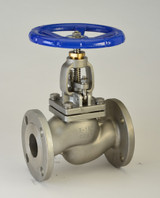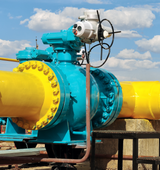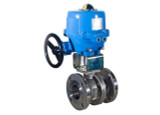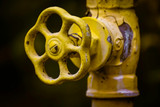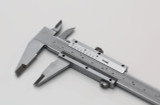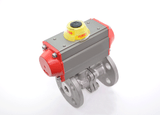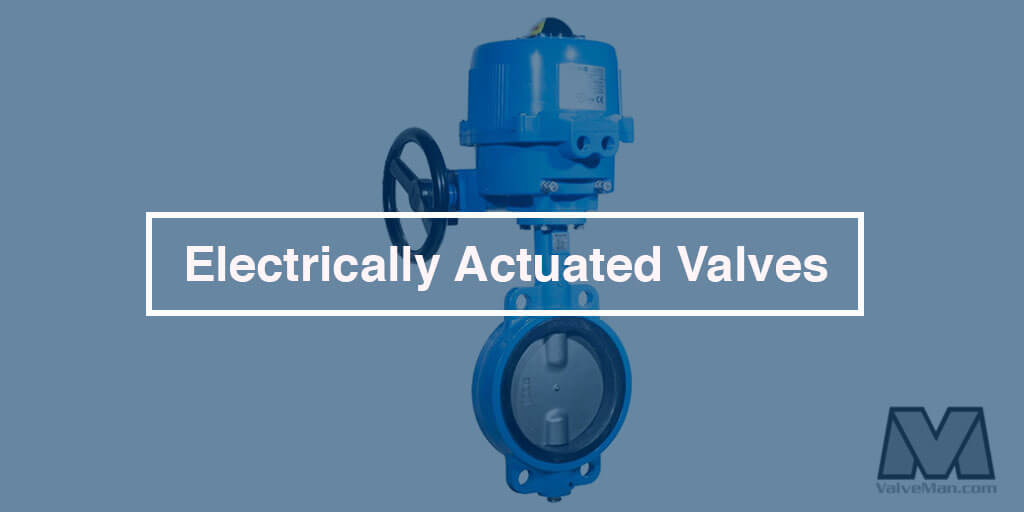
Electricity moves at the speed of light, making electrically actuated valves highly proficient in fast closing and opening actions. Electric actuators employ an electric motor which provides the valve needed torque for operations. Generally quiet and cost efficient, electrically actuated valves are a smart investment for countless applications.
Electrically Actuated Valve Types
There are different types of electrically actuated valves, though the most basic workhorse is the rotary design. Rotary actuators employ an electric motor and shaft mechanisms to create rotational movement to open and close a valve. Most rotary actuators are coupled with 1/4 turn valves, can be direct mounted, and are perfect for automation applications. Like all electrically actuated valves, they provide precise positioning and control. Another common type of electric actuator is known as a linear actuator. Rather than a rotational movement, linear actuators perform a push/pull movement, converting electric energy into straight line motions. Electric linear actuators are typically used in positioning applications. They are often powered and controlled by step motors and servos. Electrically actuated linear control valves are far less common than rotary styles, though, and tend to be expensive.

Why Use Electric Actuators?
While speed is only one factor when considering the right type of actuator for your application, the power source may be the most important. While it's not always readily available, electricity is the most common power source for any shop or plant, and is easily the most cost effective, making electrically actuated valves the natural choice. Depending on the number of actuated valves being supplied, it can be quite a draw on an electrical supply. However, compared to the cost of supplying power to a pneumatic system, it's much cheaper. An air compressor runs continuously, even when idling, constantly drawing power. Another big advantage of electric actuators becomes apparent when they are used for more than one task. Changeovers in a factory can be time consuming, and therefore expensive. Because electrically actuated valves are easily programmed or set for a specific function speed, they substantially reduce changeover costs.
Recommended Electrically Actuated Valves
These are just a few examples of electrically actuated valves available through the ValveMan.com valve store. We carry a variety of sizes, models, and configurations for almost any application. We've been in the industrial valve business for over 50 years. It's simply what we do, and we do it better than anyone else.
Electrically Actuated Valves - Related Articles
What is a Duty Cycle and How Does it Relate to Electric Ball Valves?
Practical Guide To Electric and Pneumatic Actuators – Which One To Choose?
Using an Actuated Ball Valve Or a Solenoid Valve For Best Fluid Control In The System
The Future of Electric Flow Actuation
Why Choose a Namur Solenoid Valve for a Pneumatic Actuator
Types of Valve Actuators: How to Select a Valve Actuator
Difference Between a Vented Ball Valve and a Standard Ball Valve
Our Posts
View AllValve Materials for Gaseous Oxygen Service
Oxygen may seem safe because it is colorless, tasteless, and odorless, but in the wrong conditions, …
Read MorePneumatic Actuators Valve Types
Have you ever stopped to think about what makes an automated assembly line push, pull, lift, and rot …
Read More-320°F Liquid Nitrogen Cryogenic Control Valve Setup
Need a valve that can handle -320°F liquid nitrogen without freezing up — and still control flow? He …
Read MoreWhy Fall is the Perfect Time for Valve Maintenance (And What Happens If You Wait)
We're well into fall now, which means it's time for that conversation nobody wants to have: winter p …
Read MoreFrom the DMZ to Bonomi: Rick Wentzel’s Valve Legacy
In the inaugural episode of the Fully Open podcast, host Gil Welsford sits down with Rick Wentzel of …
Read More
Check Valve vs Backflow Preventer Comparison | ValveMan
If you need to make sure that fluid in your pipe system flows in one direction only, and prevent rev …
Read MoreDifferent Types of Gas Shut Off Valves | ValveMan
Whether you're upgrading your residential gas system, looking for the best gas shut off valve for yo …
Read MoreGlobe Valve vs Ball Valve Comparison Guide | ValveMan
Valves are widely used in industrial and manufacturing facilities, but they’re also used in utilitie …
Read MoreNEMA Ratings Explained | ValveMan
Have you ever wondered what that little NEMA number on your electric actuator meant? Or perhaps, you …
Read MoreGate Valve vs Ball Valve Comparison Guide | ValveMan
Valves are widely used in industrial and manufacturing facilities, but they’re also used in utilitie …
Read MoreValve Inspection - Main Points of Valve Inspection and Testing in Manufacturing Settings
Industrial facilities rely on different types of valves (such as gate valves, check valves and ball …
Read MoreCan Ball Valves Be Used For Flow Control?
Ball valves are widely used in plumbing and piping systems, in fact, they are one of the most common …
Read MoreIntroducing Bonomi Valves
The Bonomi Group is a leader in industrial sectors including oil and gas, hydraulics, heating and en …
Read MoreUnderstanding Valve Actuators: Manual, Electric, Pneumatic and Hydraulic
Are you a beginner new to the valve world, ready to learn more about the various types of valve actu …
Read More3 Check Valve Mistakes to Avoid
So, you’re looking for a check valve, but you’re not sure if there’s any pitfalls to look out for? O …
Read MoreTypes of Valves in Plumbing
Have you ever wondered what goes into managing the flow of water in your home, or through a building …
Read MoreIntroducing Apollo Valves
Apollo Valves® inventory includes a wide range of valve products supplied to diverse markets. These …
Read MoreTypes of Water Valves
We all know that valves play a crucial role in regulating the flow of liquids and gasses in a broad …
Read MoreUnderstanding Valve Sizes and Measurement
Sizing the appropriate valve is critical to ensuring the performance of your system. Whether you'r …
Read MoreBall Valve Types and Applications
Ball valves are important components in a vast range of systems, from small family-owned workshops t …
Read More
 888-825-8800
888-825-8800













